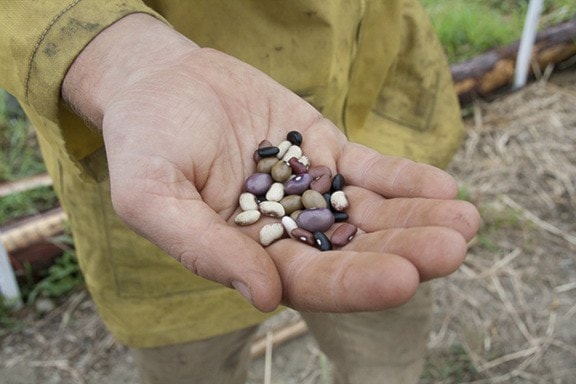We gardeners celebrate what’s really important this time of year — a fresh canvas to plan and play with.
‘Tis the season to sit down with a hot cup of tea, a list of seed we have in stock and the new catalogues to order what we are missing. I keep my seed list alphabetically, so as I go through the catalogues I can easily see what I need.
Seeds best suited for our short, hot summer would ideally be grown around here, or somewhere with a similar climate. Those we save from our own plants are best, provided we’ve followed good seed-saving practices. Local producers, like Dan Jason’s Salt Spring Seeds, sell excellent products for our climate and offer varieties that aren’t available from big companies. Dan believes in maintaining seed diversity so we are not dependent on whatever the commercial industry decides we should grow. We need diversity among plants so that if one variety fails, another will see us through.
Some seeds grow better in certain soils, climates or altitudes than others. With fewer choices the available seeds may not grow the best crops possible, if they grow at all. Some gardeners may have a failure and blame it on themselves when the problem may just have been poor quality or seed not suited for our area. One way to find out if they will even sprout is to perform a germination test: take 10 seeds and spread them on a damp cloth, roll it up and put it in a labeled plastic bag. Open it up each day to refresh the air and note how many sprout. If only half sprout you may not want to use this seed as it is probably old, or you might consider planting twice as much.
Cheap seed might not produce decent crops no matter how well they’re grown — lettuce may bolt early or radishes may be woody despite the gardener’s best efforts. It would be a shame to waste all the planning, preparation and labour on a large plot of poor quality seed when a better quality would produce a fine harvest on less land.
How about trying a vegetable you’ve never tried before? Salt Spring Seeds has red lentils and flax, neither of which are commonly grown, yet take up little room and are so trouble-free they almost grow themselves.
This is a good time to remember which vegetables your family liked and didn’t like. Perhaps you’ll want to allot more room for your favourites or for crops you haven’t grown. Corn, we are told, takes up too much room in a small garden, but if you really like corn it may be worth allotting space for it anyway. David certainly thinks so. So what if more lettuce, carrots or onions can be grown in the same area? Your family might prefer fresh corn right off the stalk; besides, local commercial growers don’t grow the old fashioned varieties, so the only way you’ll have any is if you grow it yourself.
Besides, the traditional Golden Bantam corn may be the perfect vehicle to deliver butter to your taste buds.
Please contact mary_lowther@yahoo.ca with questions and suggestions since I need all the help I can get.
